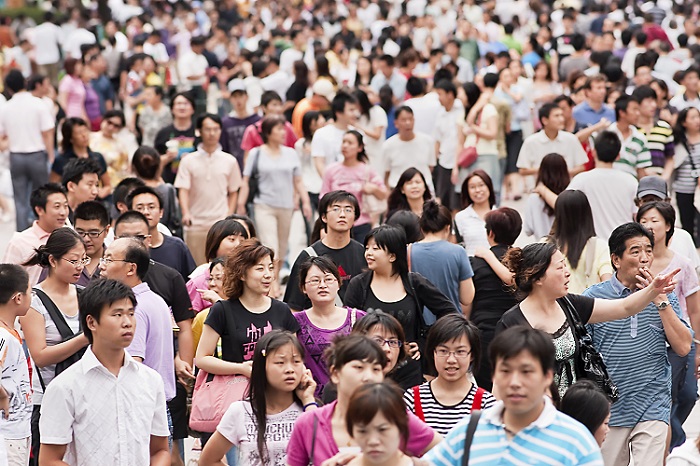Asia Pacific economies are rapidly growing due to an influx of smart cities, aiming to improve the region's quality of life and support a growing population.
The Connectivity and QoL report by MIT Technology Review analyses how digital consumer habits and pervasive technology is driving these "innovation labs" to enhance liveability.
The report highlighted three Australian cities. Sydney was reported to be leading in the promotion of public data as a common resource for smart city developers (as is Singapore), and Canberra attempting to use a network of connected neighbourhoods and application-enhanced personal and private transport networks to create two “smart from scratch” suburbs.
It also paid special attention to Adelaide, which is seen as a home for globally-minded innovation, with its “smart” projects such as Tesla’s “big battery” and Gig City, and of course, the Australia-wide NBN, which is expected to reach 98% of premises by 2021, according to the report.
What drives smart cities?
Despite Australia's poor climate change track record, according to Isobar Australia Managing Director, Erik Hallander, community building and connecting people to services is the underlying driver for Australia smart cities – not environmental efficiency.
“Commuting apps and smart parking initiatives are anchored to enhancing residence convenience, and less so about sustainability,” he said.
These suburbs, along with the predicted rollout of smart exurbs*, will serve to capitalise on space to build infrastructures to deal with urban congestion and community management, according to Hallander.
“Australia’s a funny market — both densely urban, but with a lot of space for new development,” he said.
The work to build smart cities is increasingly carried out through “City Deals” – memorandums of understanding between federal and local governments and private investors. Townsville in Queensland and Launceston in Tasmania have already signed City Deals in the last year, and a West Sydney deal is in the works. National efforts to develop these smart cities involve infrastructure investment, policy coordination and targeted promotion of sustainability applications.
The report includes case studies on the smart city development efforts of seven other key markets across the Asia Pacific; China, Hong Kong, India, Japan, Singapore, South Korea and Taiwan.

Could the development of smart cities solve countries like China's congested population crisis? Source: Shutterstock.
Key practises and findings across the Asia Pacific
These case studies explored what measures were needed and are already in use to develop smart cities in green and/or brownfield areas for each country.
Cloud computing enabling fast and cost-effective application development was reported to be essential for regional smart cities, particularly in Mainland China, Hong Kong, Singapore and increasingly, India.
The report also found that prominent exporters of IoT devices, such as Korea, Japan and Taiwan are invested heavily in sensor and device-based management to detect leaks, theft or security breaches, an area where Australia falls severely behind, while facilitating more personalised services for consumers.
Another driver of smart cities was reported to be the migration of transaction payments to mobile platforms or frictionless card or chip-based applications, which are emerging in Singapore, Taiwan and India, and growing particularly fast in China due to social media applications like WeChat.
Creating open “sandbox” environments was reported as an Asia-Pacific-wide essential for prototyping useful applications for residents: many of these involving an existing service like public transport being “powered” by advertising.
The report found Asian governments and business are willing to invest in experimental models using new technologies, business models and urban planning design in line with “anchor” services, such as health care and transport.
Additionally, technology companies, such as China’s Alibaba and Japan’s Panasonic, are reportedly using smart cities as R&D platforms to also experiment with new technologies, such as big data analytics or IoT and business models.
Meanwhile, municipal governments in Asia are also collaborating with the private sector on a ‘value exchange’ term according to the report, where firms can meet their own objectives while contributing to public services.
Development challenges
Though smart cities seem to encapsulate the best qualities of what a city should be; green, fast and spacious, they still face some development challenges.
Cities developed in greenfield areas lack established commercial and social infrastructure, holding no incentive for potential residents apart from being “smart”. Conversely, infrastructure within brownfield efforts is insufficient to begin with.
“Both these challenges complicate one of the primary goals of smart cities in Asia Pacific: to attract skilled professionals and entrepreneurs to move there — and stay,” said the report.
However, there are cities which utilise both green and brownfield areas, meaning there are growing ecosystems which could address smart city challenges across the spectrum, from developing apps to address future challenges and creating efficient solutions where urban infrastructure lacks.
“Cultivating comprehensive smart city innovation clusters means that Asia Pacific economies will be better able to develop urban environments which are more compelling for their current and future knowledge workers,” explained the report.
*Semi-rural prosperous areas some distance away from major cities, however close enough for its residents to commute from to work. Exurbs are usually larger in size, density and/or political power than suburbs, and have the means to run local businesses.










